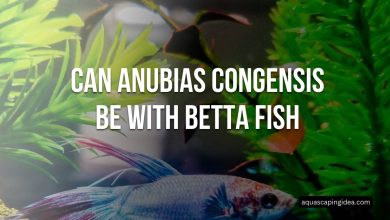Best Decorations For Betta Fish

While tiny, bettas burst with oversized personality just waiting to shine. Properly arranged tank decorations give them center stage to strut their fins, building bubbly nests and exploring new elements that enrich daily life.
The right ornaments also mimic native habitats, making fish feel secure. Structured layouts prevent boredom by offering areas to investigate. Best of all, thoughtful choices safeguard delicate fins that could snag on unsafe décor.
Follow these creative possibilities for fashioning a cutting-edge gallery around your betta. Consider themes that highlight their attributes using strategic plants, hides, substrates, and lines of sight tailored specifically to bettas.
Safe Size Selection
When it comes to betta tank decorations, bigger is rarely better. Their long, flowing fins and slender bodies evolved for languidly navigating still, shallow waters. Most aquascapes overwhelm limited mobility. Consider each piece in proportion to your fish.
Here’s a table on Safe Size Selection for betta tank decorations:
| Decoration Type | Safe Size Guidelines |
|---|---|
| Plants | – Short species like mosses, anubias, and aquatic grasses
– Avoid dense plantings that block swimming paths |
| Rocks/Driftwood | – Modest, flat structures bettas can easily traverse
– No tight crevices or narrow spaces to squeeze through |
| Caves | – Roomy caves 2-3 times the betta’s body length
– Avoid caves with narrow entrances that can tear fins |
| Free Swim Space | – Leave substantial open areas, at least 50% of tank
– Limit total decor volume to less than 20% of tank size |
The key things to consider are:
- Proportions that don’t restrict the betta’s movement
- Plenty of open swimming areas
- Avoiding tight spaces that fins can get caught or snagged
- Limiting overall decor volume to prevent a cramped environment
Strategic Structures
Mimicking Southeast Asian streams with plants, hides, substrates, and visual barriers gives captive bettas environmental enrichment that reduces stress and aggression. Consider these stimulating inclusions:
Plants: Floating species provide security while rooted versions oxygenate water.
Caves: Tucked into planted groves, half-buried caves replicate jungle snags.
Substrates: Natural sand and dirt supports beneficial bacteria and grazing.
Water Diffusers: Foam barriers break up open water for exploration.
By thoughtfully arranging naturalistic components, aquarists create dimensional worlds for endlessly dynamic bettas.
Plant Life
- Live Plants: Live aquatic plants like anacharis, java fern, and amazon swords provide natural hiding spots, oxygenate the water, and can help make bettas feel more secure in their environment.
- Artificial/Silk Plants: Silk or plastic plants don’t require special lighting and are easy to keep clean. They allow you to get a natural planted look without the maintenance of live plants.
Hiding Spots
- Caves and Logs: Betta logs with hollow centers and natural driftwood caves give your betta cozy hiding places to tuck away and feel safe when wanting privacy.
- Betta Hammocks/Leaves: Betta hammocks and large silk leaves positioned near the surface provide your betta with a restful place to lounge out of the water flow.
Bottom Decorations
- Natural Gravel: Using a natural gravel substrate provides a natural look and beneficial biological surfaces for good bacteria growth.
- Marbles/Gems: Decorative marbles or gemstones make a colorful bottom substrate that’s easy to clean.
Decor with Function
- Betta Logs with Leaves: These hollow logs have attached leaves near the top, giving your betta a cozy hiding spot as well as a resting place near the surface.
- Floating Betta Logs: Logs that float on the surface allow your betta to lounge fully out of the water when wanted.
Creative Decorations
- Natural Driftwood: Pieces of driftwood can be arranged to create interesting hardscapes and hiding areas with a natural look.
- Themed Decor: Resin decorations like shipwrecks, castles, or sunken ruins let you create a customized themed environment.
Tips and Considerations
Avoiding Sharp Decorations
- Sharp edges or points on decorations can tear betta fins and damage their delicate fins and skin. Opt for smooth, rounded items without any rough areas.
Providing Horizontal Resting Spots
- Bettas need to rest near the surface frequently since they are labyrinth breathers. Leaves, logs, and betta hammocks give them easily accessible horizontal resting places.
Ensuring Plenty of Swimming Room
- While bettas don’t require a lot of swimming space, it’s important not to overcrowd their tank with too many decorations. Leave enough open areas for them to swim a bit.
Tips and Considerations
- Be mindful of decor shapes and placement to prevent fin damage from rough areas. Provide ample horizontal resting areas at the top. And leave enough open space for swimming to keep your betta healthy and unstressed in their environment.
Plants and Greenery
Live or silk plants provide hiding spots, resting areas, and a natural environment. Good options include anacharis, java fern, moss balls, and short grasses. Avoid overly dense plantings.
Caves and Hides
Bettas love cave decorations to tuck away and feel secure. Betta logs, driftwood caves, and smooth pebble formations make great hides, as long as they have ample swimming room.
Horizontal Resting Spots
Since bettas breathe air from the surface, it’s important to include resting areas like betta hammocks, floating logs, or large leaf decorations near the top.
Natural Substrates
Gravel or sand substrates promote beneficial bacteria growth. Gemstones and marbles also work and are easy to clean.
Creative Hardscapes
Get creative with arranging driftwood, smooth rocks, or aquarium-safe resin decorations like shipwrecks and ruins to create an engaging hardscape.
FAQs
What plants work well with betta fish?
Bettas especially appreciate floating options like hornwort, anarchis, and water lettuce. These provide security while allowing room below for building nests. Also use shorter rooted varieties under 6 inches tall.
Should I have decorations and plants in my betta tank?
Yes! These elements enrich spaces for active fish and replicate native habitat. Just opt for petite pieces that won’t tear flowing fins or leave few swimming paths between tightly packed displays.
What substrate is safe for betta tanks?
Natural sand, plant-based gravels, and soil containing additives to prevent dangerous pH drops work well. Bare glass also offers a classic look. Avoid sharp pebbles or crushed glass that could damage fins.
Can betta fish live in tap water?
With some adjustments, tap water can support healthy bettas. Use chemical conditioners and pH buffers to remove chlorine and heavy metals while customizing water to ideal mineral levels for these sensitive fish.
Conclusion
Deck out dazzling betta tanks with strategic ornaments hand selected to delight your fish. By focusing first on safety and enrichment, aquarists transform basic glass boxes into spectacular galleries showcasing these legendary fish. Thoughtfully arranged plants, caves, sightline breaks, and appropriate substrates give your new friend a beautiful stage to exhibit elegant behaviors for years on end.




One Comment